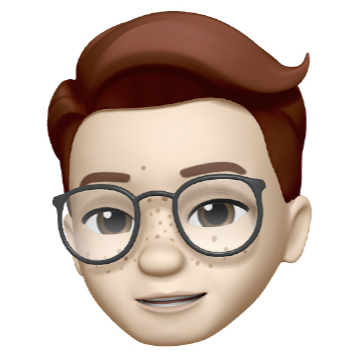It’s been about a month since the initial release of Oh Bother, and after a surprisingly action-packed rollercoaster of post-launch buzz, the dust has finally settled. Last time round, I wrote about the development and launch of the app, and touched a little bit on how, by my modest standards, the whole thing felt like a success. Today, I thought I’d tell the more detailed story of how the app, through many strange and unexpected twists and turns, came to receive the attention it did. My goal with this article really isn’t to say “look at all these great things that happened!”, but rather, to shed some light on how they happened (hint: I pretty much accidentally stumbled into all of it), and what can be learned from how it all went down.
Chapter 1: In Which a Small Audience is Built
Truthfully, this story begins back in January, when I decided to get on Twitter, start writing a blog, and figure out if I could get anyone to listen to me. I’ve talked about this process lots before and won’t dwell on it now, but suffice to say: without this first step, the rest of this story would not have happened, at all, even a little bit. I’ll come back to this point later. On to the next chapter!
Chapter 2: In Which Some Promo Tweets are Crafted
The day before the launch, I tweeted about it and attached some promo art:
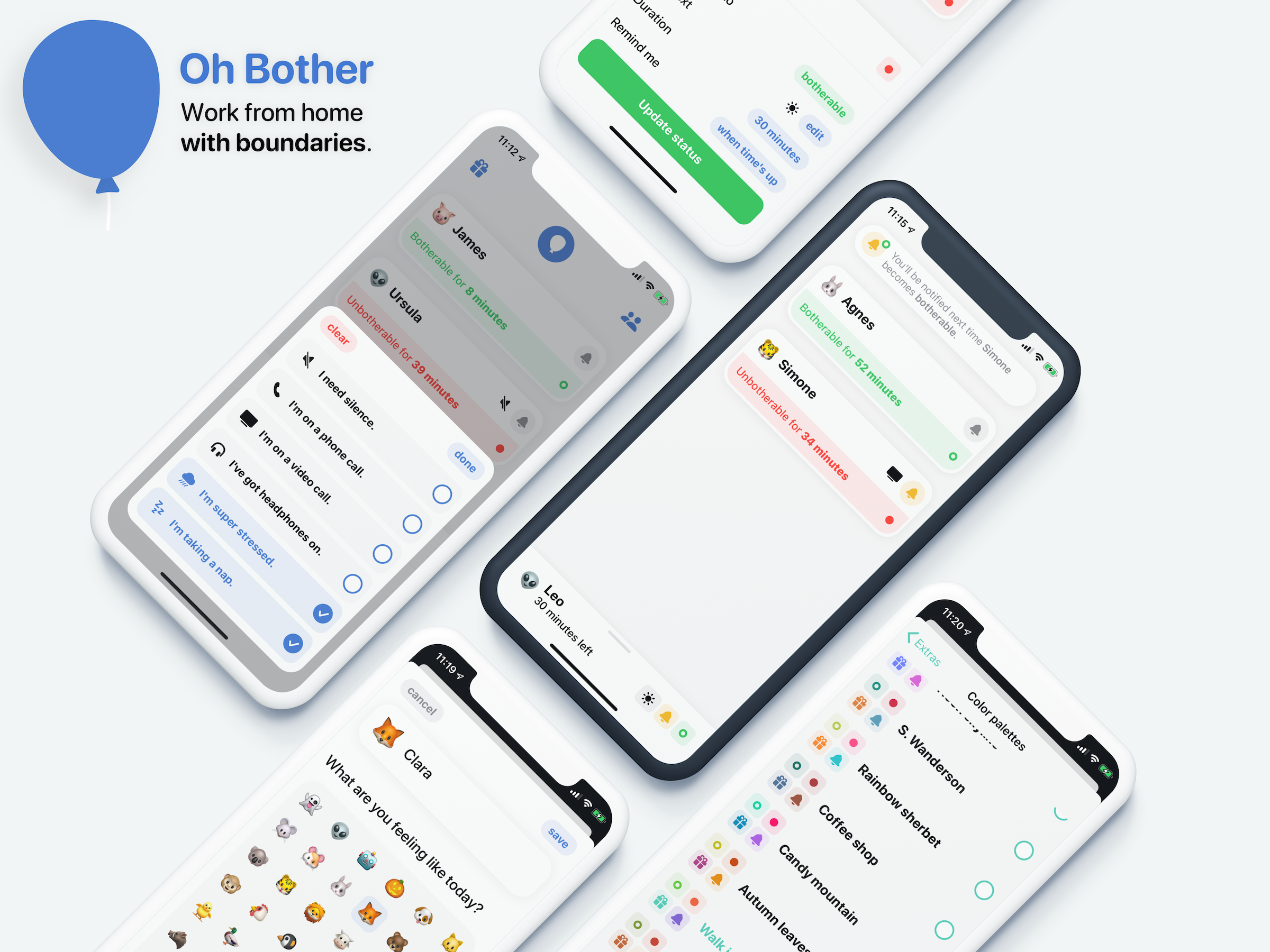
That tweet took off in a way I hadn’t really seen since making a bad joke about VIPER. Aside from a healthy dose of dumb luck, I think there are a few key reasons this was able to capture some attention.
First, and perhaps most importantly: the promo art looked good! That’s kind of a silly thing to say — of course you want your promo art to look good — but I put some effort into making sure it felt polished and intentional, and I think it paid off. I bought some device templates that matched the clean, round aesthetic of the app, and carefully chose a small set of screenshots that highlighted both the app’s functionality and its unique design.
On top of that, I had come up with what I think is a reasonably snappy one-liner to describe Oh Bother — “a little app I built to help you and your housemates avoid poorly-timed interruptions when you’re working from home together” — and made that the focal point of the tweet. It’s a bit wordy, but let’s be honest: being wordy is kind of becoming my thing. Ultimately, I think it works because it describes a single, very specific (and hopefully relatable) problem, and because it emphasizes the idea that this is a small, handcrafted app made by one person.
I can try to justify the response to the tweet all I want, but at the end of the day, the main reason it took off is thanks to a few key retweets from some folks with much larger audiences than me. I’m super thankful and lucky that those people were jazzed about my work, and it’s made me eager to pay it forward when I see other indies trying to get their own inspiring little projects off the ground.
On launch day, I tweeted about the app again, as one does. I had big plans to put together some sort of video for the big go-live announcement, and spent a bunch of time messing around in Rotato and iMovie, but I couldn’t for the life of me come up with anything that didn’t look like it had been made in Windows Movie Maker in 2002. Making marketing videos is, apparently, not my forté. So I moved to plan B, and attached my App Store screenshot art to the tweet instead.

This tweet caught on fairly well for roughly the same reasons the first one did, though interestingly, the first tweet was still doing the rounds at this point, and I wonder if that didn’t actually take away from this one’s ability to attract the same amount of attention. Also, hilariously, I forgot to include a link to the App Store in this tweet, and of course the pre-release tweet didn’t have one either, so I had two somewhat viral tweets going around with no direct way for people to get to the thing I was trying to market.
All in all, these were a really exciting and expectation-shattering couple of days, but I do wonder if just a single tweet on launch day, with the nice promo art and a direct link to the app, may have driven more download traffic on day one. I guess we’ll never know ¯\_(ツ)_/¯
Chapter 3: In Which a 9to5Mac Article Appears
I didn’t bother (🥁) reaching out to any press leading up to launch. Though I’m sure there are plenty of counter-examples out there, cold emails have never felt to me like a great marketing tool if you don’t already have a reputation or some buzz around your product, and ultimately, I decided that for this small and somewhat experimental project, I would just focus on using Twitter for any marketing efforts.
Having said that, I did decide to throw a little press kit onto the app’s website — just in case! — and I’m glad I did. I included a high-res app icon, my App Store screenshots, a couple extra pieces of promo art, and some short, friendly blurbs about myself and the story behind the app.
Some way or another, a 9to5Mac writer came across that first tweet on the day before the launch, and left a comment expressing interest. I quickly got in touch, and was able to make his life easy by sending him a couple promo codes and pointing him to the press kit. Sure enough, less than 24 hours later, a great little article went up on 9to5Mac to coincide with the release.
Making an appearance on 9to5Mac, on launch day, was not at all on my radar as even the stretchiest of stretch goals for this app, and I’m super lucky and thrilled that things played out the way they did.
Chapter 4: In Which the App Somehow Ends Up on Product Hunt
At some point on launch day, amid a veritable deluge of tweets, someone mentioned to me that they had posted Oh Bother on Product Hunt. I had no plans to post on Product Hunt myself — again, I was really just focused on making a bit of noise on Twitter — so I said something like “Oh cool, thanks!”, and didn’t think much of it. I figured it would fizzle out pretty quickly.
Late the following day, someone tweeted at me with a link to the Product Hunt post saying “This is you!” Sure enough, Oh Bother had a few hundred upvotes and was near the top of the chart. Next thing I knew, Ryan Hoover was tweeting about my app, and I was scrambling to stake my claim as the product’s “maker” in order to add some more detail to the post.
At that point, it was largely too late for me to really move the needle on the post, but nonetheless, it was pretty neat to see people discovering and talking about the app without my involvement. In retrospect, I can’t help but think a polished, properly-timed, well-written post on Product Hunt might have generated a lot more interest on launch day.
Oops.
Chapter 5: In Which the App sort of Ends Up on Reddit Eventually
Launch day was a Thursday. By Saturday, I had figured out that this little app idea had more legs than I thought, and around noon I realized “Oh, don’t people post their apps on r/Apple on Saturday? Maybe I should actually think about doing that.”
I’ve spent time on Reddit here and there over the years, but I’ve never had an account or really gotten involved in any Reddit community. I created an account, headed to the Apple subreddit, read the rules carefully (I’ve heard Reddit mods can be even meaner than Stack Overflow mods), and posted something about Oh Bother as part of r/Apple’s “Promo Saturday”.
It was already pretty late in the day to be posting; to make matters worse, this was my first ever post on Reddit, so it had to be approved by mods. That approval took several hours, and my post didn’t actually become visible until late Saturday afternoon.
Despite my inability to do any part of this correctly, the post still ended up with a decent number of upvotes and spent some time on the front page of r/Apple. Perhaps you’re starting to sense a theme here: what if I had actually planned this part out properly?
Chapter 6: In Which a Very Exciting Email Arrives
The following Monday, I received an email from App Store Connect with the subject line “Your app, Oh Bother, may be featured on the App Store”.
This was hugely exciting, and equally unexpected. Getting featured on the App Store is something I had always dreamed about when I started building iOS apps, and although features in 2020 may not carry the same weight that they did in 2012, this still felt like an important milestone.
When your app is being considered for a feature in the App Store, the whole process from the developer’s point of view is automated; this email wasn’t a real person from Apple patting me on the back, but rather, a templated set of instructions on what I had to do to be considered, and a deadline. There are different types of features that require different actions, but mine was a pretty standard case of providing “Artwork for the Apps Tab”. The artwork had to be provided in a photoshop file, based on a provided psd template, and follow a whole bunch of other rules I didn’t understand like “Provide all elements as high-resolution scalable vector Smart Objects on individual layers” or “Evergreen art required”.
I use Sketch for all my design work, and do not own or really have any expertise at all in Adobe products, so the next 24 hours involved me downloading a free trial of Photoshop and giving myself a crash course on how to properly move my vector assets over (while also trying to design some really simple artwork that didn’t look half-bad).
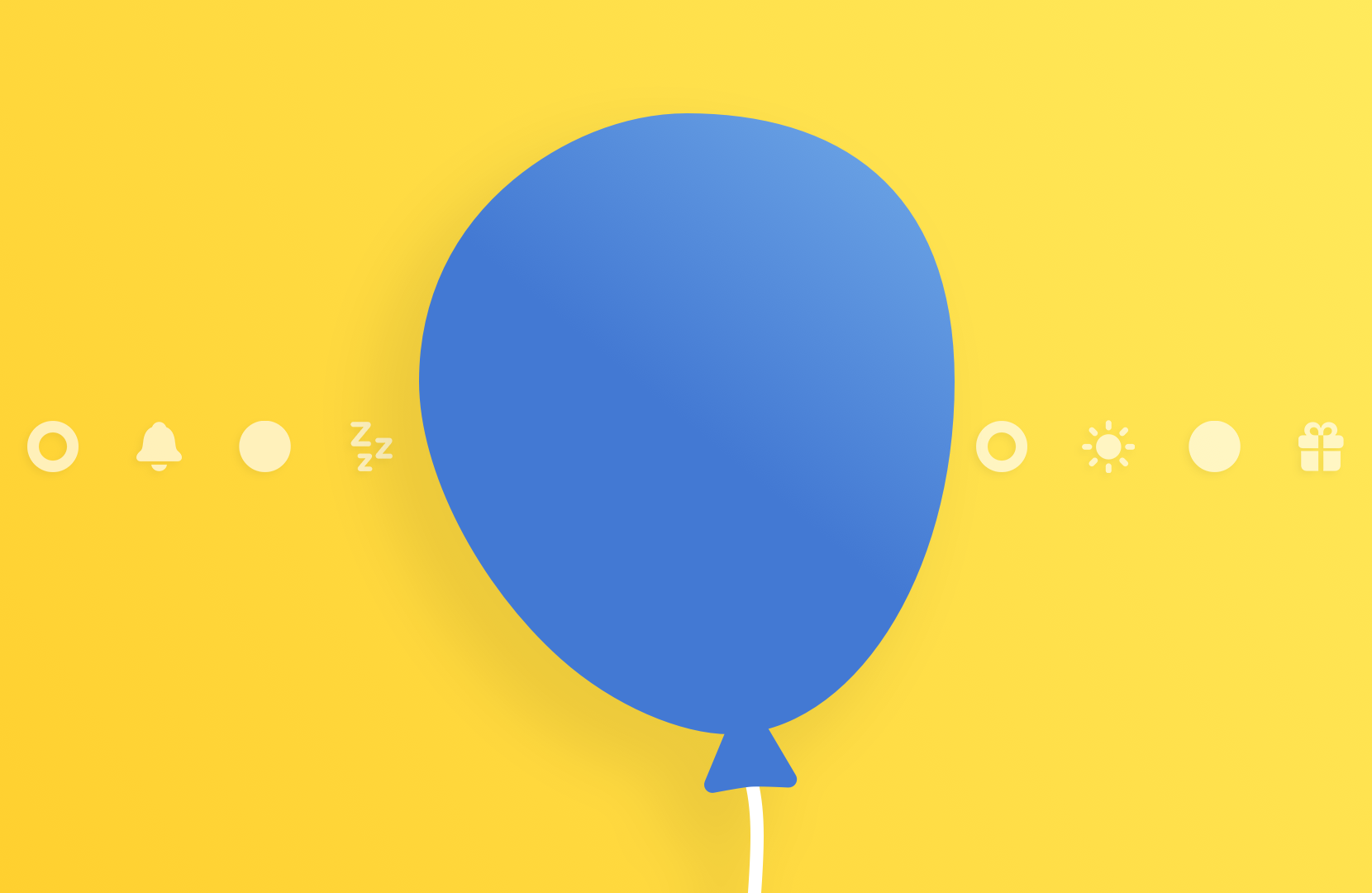
It’s like the icon, but…with little thingies.
The end result was…fine, I think? I got an automated message the day after submitting that said the artwork was approved. It still hasn’t been used in the App Store yet (which, anecdotally, seems pretty par for the course — you never really know if and when you’ll actually get that bigger banner feature). But, the app did get some smaller “Apps we love right now”-type features in the US and Canadian stores in the couple weeks following the release, which were an absolute thrill to stumble across:

Chapter 7: In Which a Very Strange Email Arrives
On May 21st — a week after launch — my dad woke up to a very strange email that began like this:

Sorry, I just want to make sure you caught that last thing I said: this email was sent to my dad. It addressed him by his first name, and was sent to his personal Hotmail address.
???????????
To be clear, I’m 30 years old — this wasn’t some situation that was easily explained away by, I don’t know, my dad having set up my App Store account or something. My dad is many things to me, but I assure you he has nothing to do with the app or any part of my software development business.
So he forwarded the email to me, saying something along the lines of “uhhhh almost deleted this, not sure what it is, but you can sort it out!” Naturally, I was extremely skeptical. Why on earth did my dad get this email? What kind of an elaborate scam was this?
But the email was sent from an apple.com email address, and I matched it to what looked like a real person on LinkedIn. They weren’t asking for money, and I couldn’t really figure out how anyone could benefit from receiving a short video of my free app. Initially I responded by asking how they ended up with my dad’s contact info, and all I got was “The address was found in our internal system; maybe it was entered when the app was set up?” (It wasn’t.)
All of this defied logic entirely, and it remains a total mystery to this day. But I already had a screen-captured video pretty much ready to go from my botched earlier attempts at filmmaking, so I shrugged, fired it off, and waited to see what would happen.
Two days later, in comes another email: “The feature is now live! Please share with your friends and followers!”
And, sure enough, there it was:
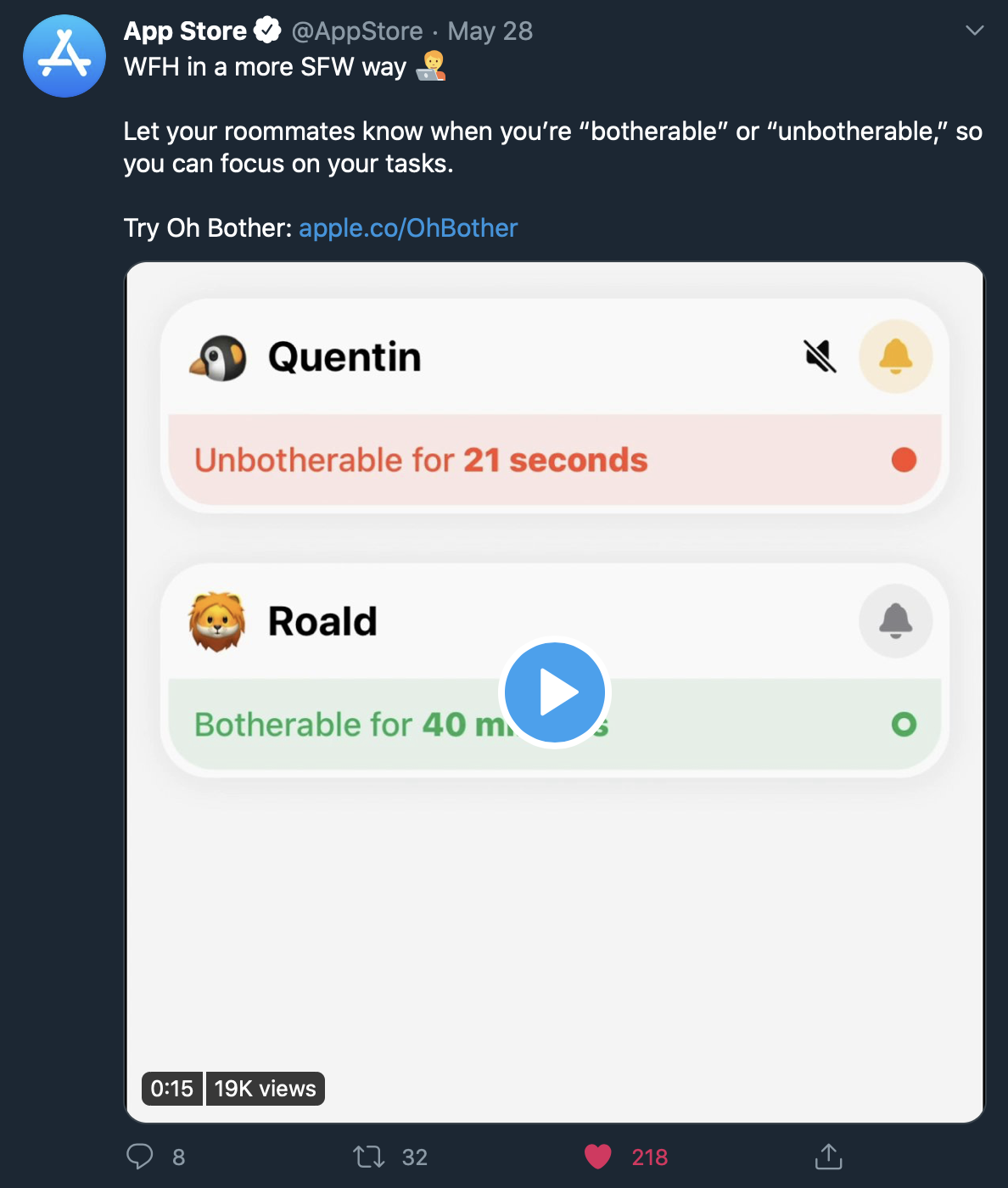
I’m not sure when this became a nudity thing, but okay Apple.
This might be the weirdest thing that’s ever happened to me. And the difference between the precise, impersonal, automated App Store artwork request and “a guy from the social media team emailing my dad” gave me whiplash. But at the end of the day, my app was shared, by Apple, to 4.5 million people. Totally wild.
Chapter 8: In Which a Blog Post goes Viral
Meanwhile, on May 23rd, I put out the aforementioned blog post about the process of building and launching Oh Bother. It was fun to write and seemed to strike a chord with a few folks, which is always what you hope to see. Usually, my blog posts don’t make too much noise beyond a couple days of slightly increased traffic on the website, and this one looked no different at first. But Dave Verwer had other ideas!
That Friday, iOS Dev Weekly went out, and my article made the cut. Awesome! I had a pretty good idea of what to expect this time round, after my imposter syndrome article got the iDW treatment a few months back.
But then at some point, I actually checked in on my traffic and quickly realized that something else was going on. Sure enough, totally unbeknownst to me, my weird little blog about indie app development — that’s right, the one you’re reading now, with the long-winded articles and the bad drawings — was on the front page of Hacker News.
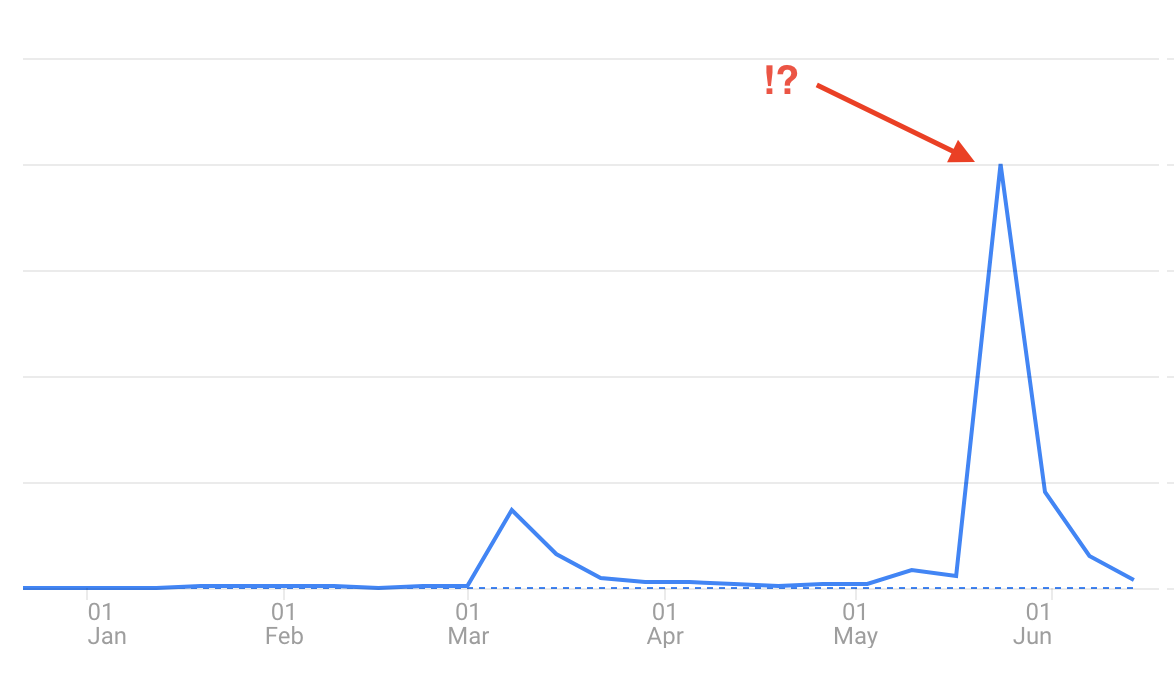
I braced myself. I’ve heard Hacker News commenters can be even meaner than Reddit mods. Thankfully, the mob spared me: I got a truly nutty amount of additional traffic, but almost everyone seemed to enjoy my writing and was generally pretty nice about it. My post even ended up making it into the Hacker News weekly newsletter that weekend. Once again, I wonder if there are things I could have done to be more prepared for something like this — I had to scramble to make a Hacker News account, tried to answer some comments, quickly got rate-limited for commenting too much, etc. — but at the end of the day, this was yet another unexpected channel by which people were finding and getting excited about the app, and I’m just grateful to whoever it was that posted my article.
Epilogue: Lessons Learned

I may not have thought this through.
It’s been an exciting, wacky ride, but it’s ultimately not worth a whole lot if there aren’t some takeaways I can try to apply next time round. So, here are some quick, bigger picture reflections on what I think worked for me here, and what I learned along the way.
First, let’s get back to chapter 1 for a moment. I realize there are certainly counter-examples out there, and I’m not suggesting this is the only way to launch a new thing and have people notice, but: I truly don’t think Oh Bother would have gotten off the ground at all if I hadn’t spent the previous few months engaging with the iOS community and building an audience on Twitter. The audience didn’t have to be huge — I think I had something like 400 followers when Oh Bother launched — but the fact that some like-minded folks cared to some extent about who I was and what I was building made all the difference here.
Something else that I think has worked well for me through all this is my insistence on making everything I create feel fun, personable and human. I’m not really interested in Oh Bother as some sort of standalone brand; rather, I want Oh Bother to be an app created by me, Dan Gauthier, and I want my personality to come through in the app in the same way I try to have it come through in my writing. There are definitely pros and cons here, but at this early stage in my “indie adventure,” I think I’ve benefited from being friendly, making people smile, and having people root for me when I put out new stuff.
On a related note: I’ve now seen firsthand how being the creator of multiple thoughtfully-made things — in my case, a blog and an app — can have a multiplying effect on the success of both. This blog is a pet project, with no lofty ambitions beyond continuing to be a place for me to write fun stuff. But it’s been really valuable in building that initial audience, and is now also responsible for driving a ton of traffic to the app. Likewise, the discovery of Oh Bother has led plenty of new people to my website, and some of those people have since really enjoyed a bunch of older articles. It’s a virtuous cycle — a very small one at the moment, but hopefully one that I can keep growing over time.
Now, despite all the good stuff I’ve been prattling on about, here’s something that might surprise some of you: Oh Bother hasn’t been downloaded that many times.
To be clear, my numbers have far exceeded anything I could have possibly expected when I pushed this little app out the door — I’ve had around 8000 downloads to date, and I was probably optimistically hoping for something like 500. But I think if a couple years ago, I had read a blog post like this about an app that had been covered in 9to5Mac on launch day, that had been tweeted about by the founder of Product Hunt, that had been featured in the App Store in multiple countries including the US, that had a whole promo video shared on social media by the App Store, and that indirectly ended up in iOS Dev Weekly and on the front page of Hacker News, I probably would have just assumed that app was doing some bonkers numbers.
Although I’ve known this to be true all along, and have written as much in the past, this experience has further brought into focus just how tricky it can be to find any sustainable success as an indie on the App Store. This was never meant to be a long-term or financially successful project, so it’s all just been a silly and largely enjoyable ride as far as I’m concerned, but it does make me wonder: were there any young devs out there who saw that App Store tweet, for example, and thought “Gosh, if I could somehow just get my app tweeted about by the App Store like this guy…that’s when I’ll know I really made it!”
Because, folks…suffice to say, I have not “made it.”
(Actually, for what it’s worth, given the number of people the App Store’s Twitter account is ostensibly reaching, that tweet did remarkably little for my downloads.)
And although downloads were never the goal of this particular project, this has nonetheless solidified an important idea for me that I’m not sure I fully appreciated before: splashy publicity does not guarantee App Store success. Like, not even close. Some of you App Store old-timers out there are rolling your eyes and thinking “yeah, duh,” but I think it bears repeating for folks who are trying to break in. As a community, we do a lot to celebrate wins like App Store features and viral tweets — as we should! — but while those wins can help, it seems to me they’re rarely a defining reason for real, sustained product success.
Next time round, I’ll have more of a plan in place to market the app on launch and beyond; I think I missed out on a bunch of easy downloads by ignoring folks outside of my Twitter bubble — press, Reddit, Product Hunt, etc. — who were clearly interested in the app. But I also have bigger questions about Oh Bother, and about any subsequent apps I build, which basically boil down to this: how can you tell whether you’re dealing with a marketing issue or an app issue? In the case of Oh Bother, is this app simply not quite compelling or useful enough to drive bigger numbers? (It is a very tiny app.) Or is this just a case where I could have done a lot more to really grab people’s attention? Or, is there something here worth chipping away at such that with steady improvements over time, this little app could somehow, eventually, find itself a stronger foothold in the App Store?
Find out next week in “Going Indie, Step 11: Solve the app store and become rich and famous with this one weird trick!”
Hey, you. Yeah, you! No, no— not you, I’m— I’m talk— yeah, you right there. Hi! Come hang out with me on Twitter and let me know what you think about the novel you just read. 🦆
